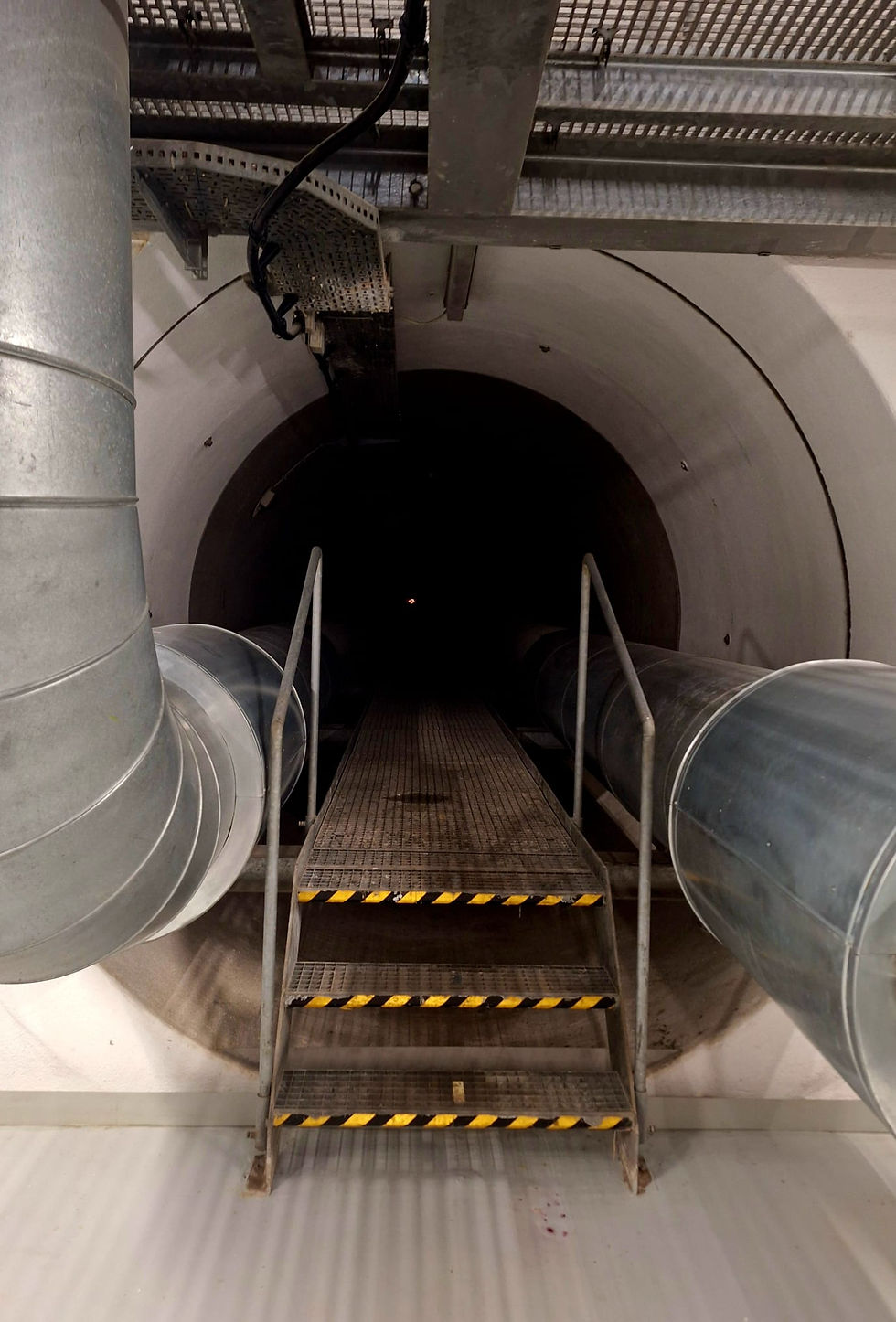Walk under the Rhine - the district heating tunnel
- christianschueler4
- Jun 30, 2024
- 4 min read
Updated: Aug 16, 2024
Attention, Cologne residents! Maybe you haven't heard of this offer yet. There is a tunnel under the Rhine that you can visit - and the best thing about it: it's free! We have to disappoint the tourists, though, because the offer is only valid for those who live in the RheinEnergie distribution area. There's a certain irony in the fact that I'm looking at RheinEnergie's district heating tunnel on the very day that I'm switching to a cheaper provider. (At this point, thanks to the great WECON network Cologne 2 for organizing this!) But what is district heating actually?

History of district heating
Oh no, history? How boring! Don't worry, we won't bore you with boring facts here or on our brewery tours. We always prefer little anecdotes, they're easier to remember! Did you know that the Romans already had underfloor heating? In fact, they used hot springs to heat their houses. A kind of precursor to district heating. We'll just skip the rest of the story and get straight to how RheinEnergie's district heating network currently works.
In heating power stations, which mostly still run on fossil fuels, 65% of the energy generated was lost before district heating was used. The heat generated by burning fossil fuels is now used to heat water. This water is no longer simply discharged into rivers as it used to be, but is piped into inner cities in specially insulated pipes. This water is 120 degrees. Because there is enormous pressure in the pipes, the water does not evaporate; the pressure increases the boiling point. This has reduced energy loss to just 11%. However, expanding the district heating network is a very costly process and is therefore only suitable for densely populated regions.

Since when has the district heating tunnel existed?
Construction of the RheinEnergie district heating tunnel began in December 1983 and was put into operation in October 1985. Just imagine: At that time, construction projects in Cologne were still working as planned! If RheinEnergie hadn't taken on the subway expansion for a while, it would have been better... With the help of a special drilling machine, they worked their way through the sediment under the Rhine, piece by piece, at a depth of almost 25 meters. If a stone blocked progress, an artificial bubble was created in front of the machine using air pressure, an employee had to get out and had a little time to find the source of the blockage. Then they went into decompression. The finds were labeled with the date and duration of the delay and can still be viewed here today. Some of these are stones, but others are also remnants of the Hohenzollern Bridge, which was destroyed in the war.

A nice cool down in summer
We can highly recommend a tour through the tunnel, especially in summer. While the city groans under the hot temperatures, you can enjoy a stroll here in pleasant 22 degrees! The tour isn't strenuous. Well, maybe a little at the end. After all, you have to climb the 100 steps that you go down at the beginning and then climb back up again at the other end. The entrance is in Deutz, near the Hohenzollern Bridge, and you come out in the parking garage at the Musical Dome. The tunnel itself is 461 meters long. If you're afraid of heights, you'll have to pull yourself together a bit, because you go up and down via grating stairs, so it's best not to look down!
Once you've reached the bottom, the expert employee from RheinEnergie will of course give you some information. If you look into a dark tube at first, he will then switch on the light at the other end from that side. A tunnel with a light at the end? Well, we can go in safely! Don't worry, of course it is completely lit during the tour. You can't feel the water shooting through the tubes at 30 km/h. Since there is no air in the tubes, nothing can gurgle or rush. Once you've reached the middle of the tunnel, marked with blue light, you might hear the roar of a ship's propeller. The reinforced concrete that surrounds us is just 30 centimeters thick. But that's enough. And supposedly lasts for 70-80 years. In short: yes, we're still safe!

Conclusion: Impressive in any case!
By the way, we are still a few meters from the Rhine. All in all, whether you are interested in district heating or not, it is not every day that you walk under the Rhine! And since the offer is free, we can only recommend it! However, there are not very many public tours, so just check the RheinEnergie website regularly to see if there are currently any free places, as the tours fill up very quickly!
If you can get a group of 15 people together, you can also request an extra tour for yourself. But don't forget to give the guide a small tip, he definitely deserves it! And if you fancy something cool after all that district heating, then come with us on a brewery tour and enjoy a Kölsch or two with us!









Comments